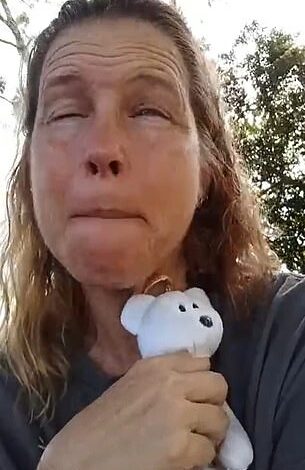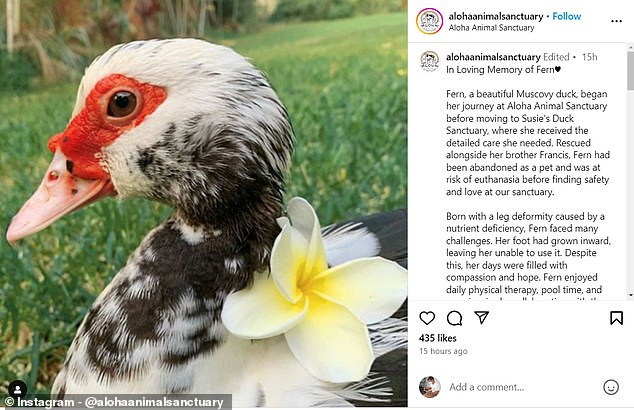Hawaii’s bird flu outbreak is confirmed as the virus is revealed to have mutated






Bird flu has spread to Hawaii for the first time, amid growing concerns that the virus could soon jump between people.
Ducks and geese at a backyard farm on the island of Oahu, home to the state capital, tested positive for H5N1 last week, with the virus likely brought in by migratory birds, officials have confirmed.
More than 70 of the birds – including eight ducklings and a swan – have now been slaughtered, but officials fear the virus is still lurking on the island.
Residents are urged to avoid sick or dead birds and report them to state authorities immediately.
But they are also told that the risk of bird flu on the island is ‘low’.
The spread of H5N1 comes after a critically ill teenager in Canada was found to have contracted a bird flu virus that had mutated to better infect humans.
Researchers raised the alarm over the case, saying it was “bad news” but adding that the virus likely acquired the mutations after infecting the patient and had not spread to others.
It is not clear where the person, who has not been named, contracted the virus, but they have been in critical condition in hospital for over a week now.


Susan Wilkinson, from Hawaii, owned and managed the bird sanctuary where the virus was discovered. She posted a tearful video online after more than 70 of her birds, including eight ducklings, had to be culled.

Above are ducks that were rescued by the shelter in early November and given a new home
Officials are on alert for bird flu after the virus suddenly switched to cows in 2022, which they said raised the risk it could spread to people.
So far, more than 100 million poultry have been infected, as well as 10,000 wild birds and 500 dairy herds in 15 states.
Fifty-three people in the US have been infected, mostly farm workers who have close contact with cows or poultry.
Each patient experienced mild illness with conjunctivitis or red eyes and some respiratory symptoms.
No Americans were sick enough to be hospitalized and there are no signs of human-to-human transmission.
However, experts warn that with any infection there is a risk that the virus will acquire mutations, making it more likely to spread among people and cause a new pandemic.
Hawaii is the 49th state to report bird flu in domestic poultry, while Louisiana is now the only state that has yet to detect the virus.
The infections were discovered by the Hawaii State Laboratories Division and confirmed by the National Veterinary Services Laboratories in Ames, Iowa.
The sanctuary’s founder, Susan Wilkinson, posted a tearful message on Instagram after all her rescue birds had to be culled.
“I lost twenty of my angels, I didn’t know it was bird flu,” she said, fighting back tears, “I started to panic and thought it was a poisoning.”
‘I found out over a week later it was bird flu. Obviously the worst case scenario happened, they came and had to euthanize everyone.”
Mrs Wilkinson was tested for bird flu but was not infected.
She is now being asked to stay away from birds for two weeks because the virus may still be lurking on her shoes and clothes.
Her sanctuary has been closed for 120 days for bird rescue, which officials say will help ensure the virus is extinct before new birds are introduced.
Mrs Wilkinson added: “I don’t want this to happen to anyone else. If you live on Oahu or any of the islands, I want you to take this seriously.
“This is not a government conspiracy, it’s not a joke, it’s that bad, it’s that bad.
“Please quarantine everything, bleach everything, be extra careful because this disease is coming fast and fast.”
Experts say the virus was likely brought to the island by wild birds that migrated from the U.S. mainland for the winter.
Bird flu normally spreads through contact with saliva, nasal secretions and feces from infected birds. It can also spread through droplets released during sneezing.
It is not clear how the virus spread to cows, but experts say it may be due to contact with secretions from infected or dead birds. It may then have spread between cows through milking machines and through respiratory droplets.
Experts say every time the virus spreads to a non-avian mammal, it increases the risk that it will acquire a mutation that makes it more able to infect humans.

A post from the duck sanctuary warned because their birds mysteriously became ill

Above is a duck that was rescued after it was found with a deformed leg. It had to be cleared due to the bird flu outbreak
Most human cases in the US were traced to infected livestock or poultry.
Only one has an unknown source: a patient in Missouri who tested positive despite having no known contact with wild birds or farm animals. They experienced mild illness and red eyes before recovering.
And in Canada, health officials aren’t sure how a teenager contracted bird flu.
The teen had not visited farms, they said, but had been exposed to dogs, cats and reptiles.
Scientists warned about the mutations after analyzing flu virus genes posted online by Canadian health authorities.
Experts say the mutations likely arose after the child was infected, as the virus tried to adapt to its host.
“This is bad news,” Dr. Scott Hensley, a microbiologist at the University of Pennsylvania, said in a Bluesky post.
“We must monitor this situation closely and increase our surveillance efforts.”




